The Creation of the Three Blues
In 1954 at the age of 68, Miró left Barcelona, the city of his birth, distancing himself from the dictatorship of General Franco. He decided to come back and settle once and for all on the island of Mallorca where he had sought refuge in 1941.
After buying a plot of land, he had a villa built just outside the town of Palma. Two years later, architect José Lluís Sert delivered the large studio the artist had long been dreaming of. Now that he had much more space, Miró could consider creating monumental works.
It was not until 1961, however, that the first three examples would be created: the three Blues that are now at the Centre Pompidou.
Although the paintings were completed on 4 March of that year, their gestation had been particularly long, with Miró beginning their conception back in February 1960. Evidence of this is to be found in the tiny sketches in biro and colour pencil drawn on anything he had to hand (Fundació Joan Miró, Barcelona). Standing out against swirls of blue pencil, the dots and lines that will feature in each of the three Blues can already be discerned. It therefore took over a year for Miró to meditate on his triptych before moving swiftly into action and giving his sketches all their majestic scale.
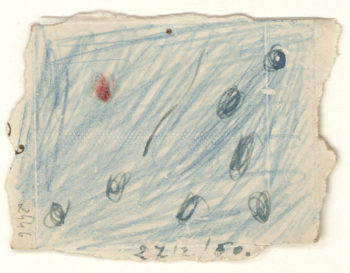
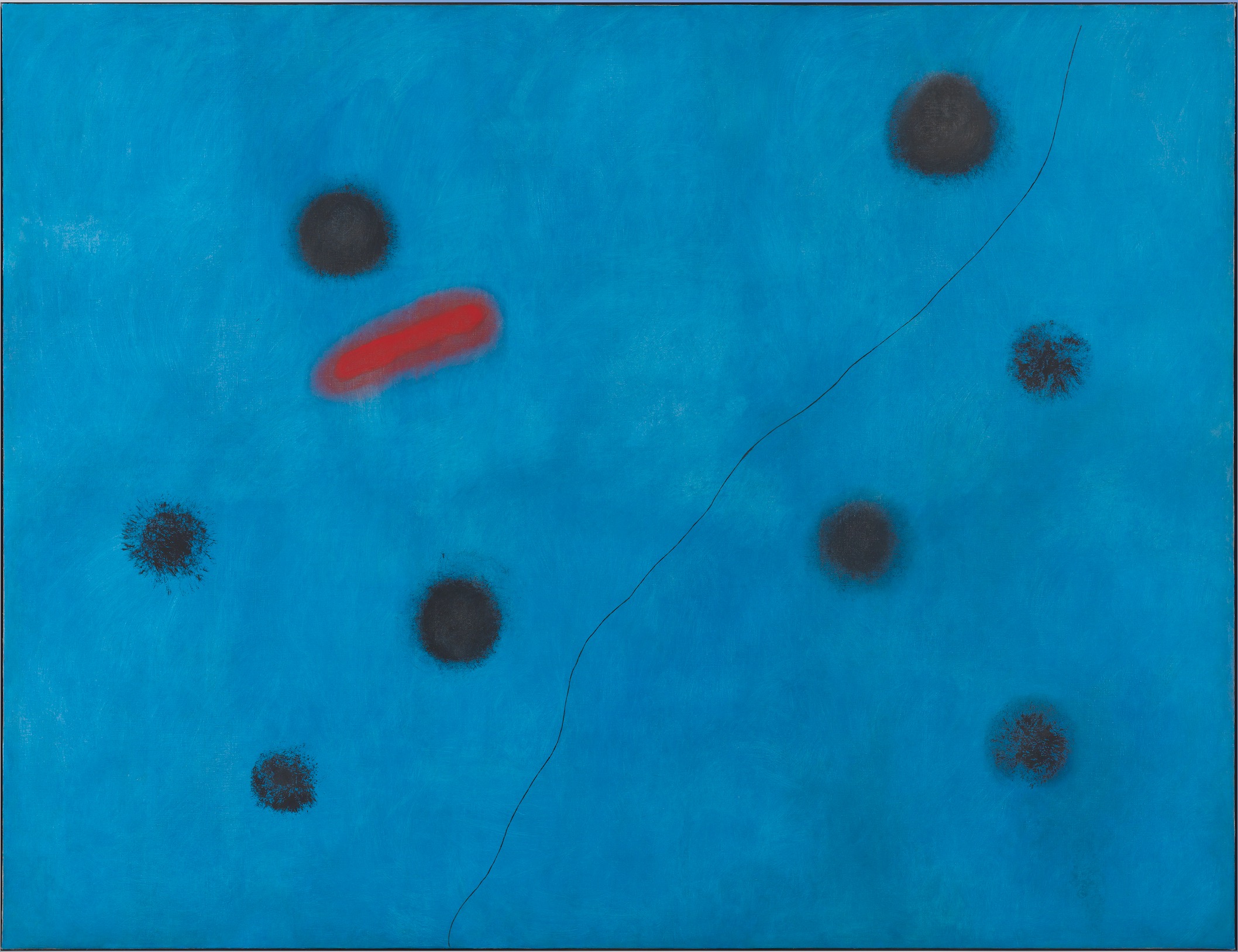
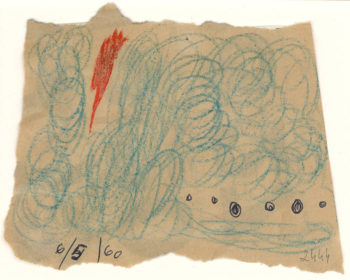
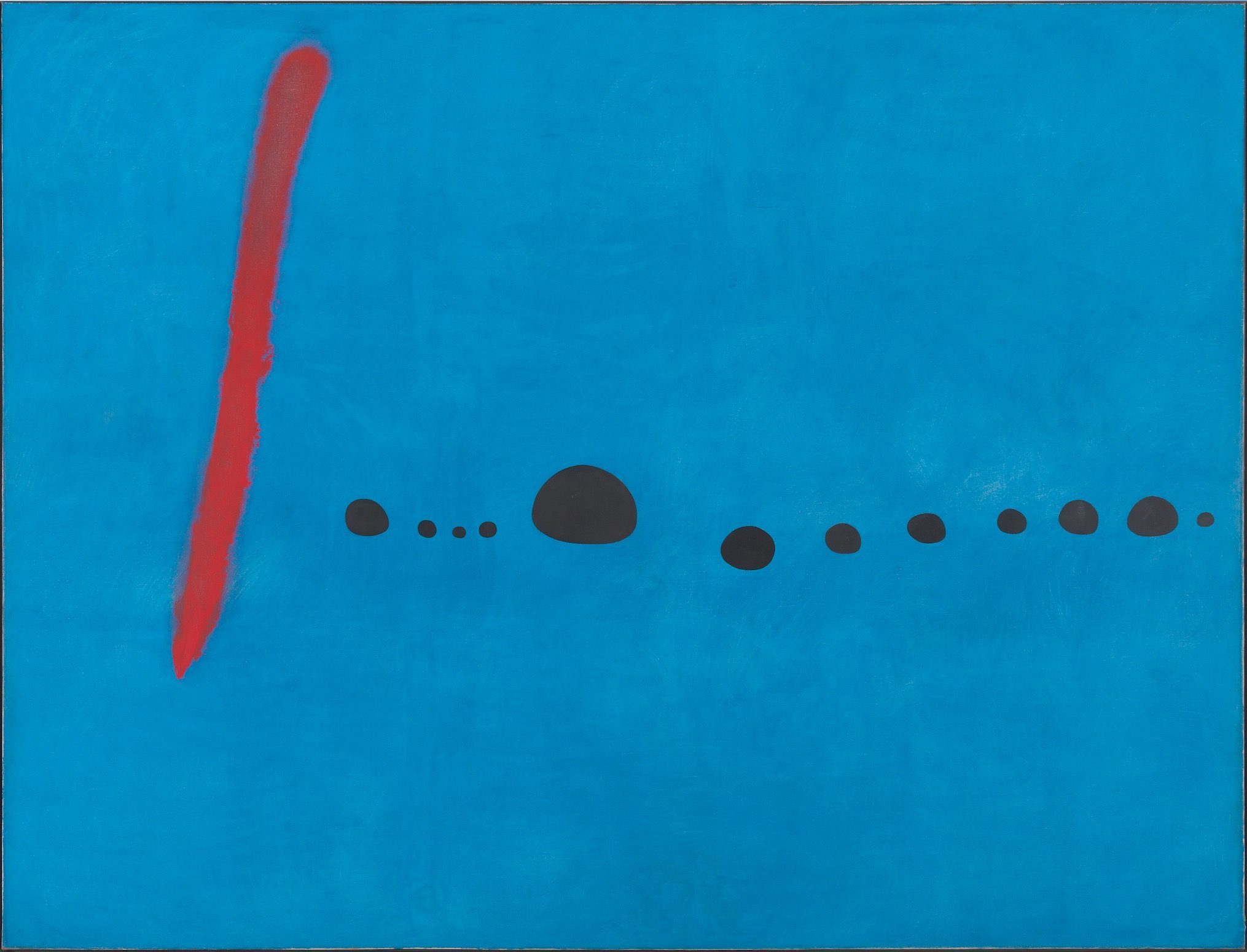
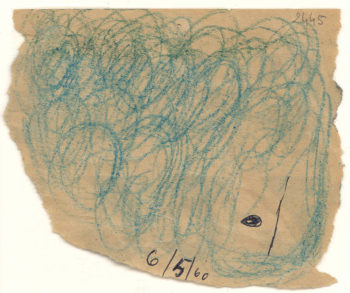
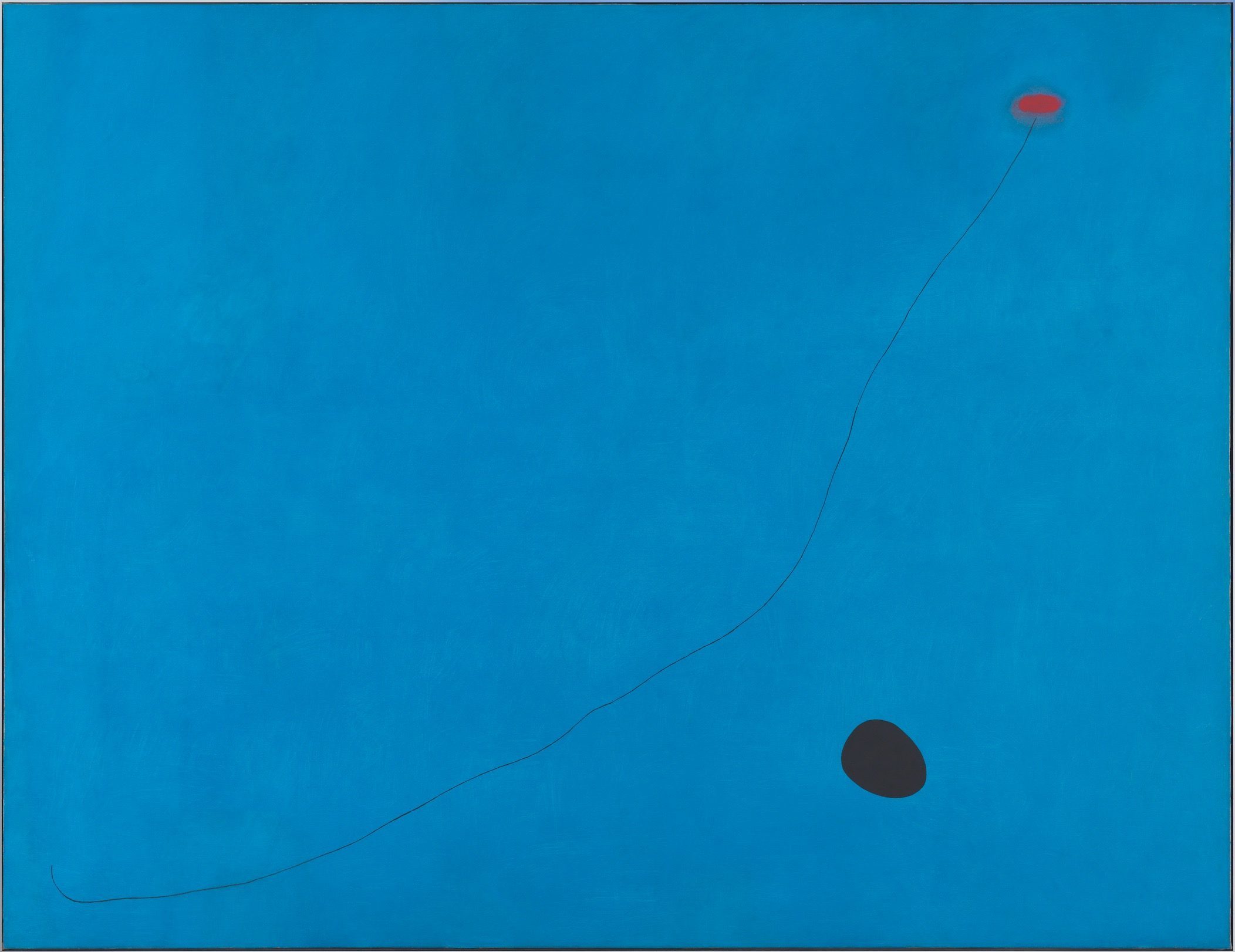
The Colour Blue
At first sight, Miró’s three paintings are characterised by their uniformly blue background, with the name of the colour also serving as the title for each of them. Associated more generally with celestial visions, blue has always symbolised calm, serenity and even mysticism.
The artist’s interest in this colour (which also occupies a special place in Catalan culture) was no doubt boosted by his readings of works by poets Rubén Darío and Stéphane Mallarmé in particular. The dreamlike dimension of the colour was to the fore in one of Miró’s “painting poems” in 1925, in which a blue patch is accompanied by a text inscribed on the canvas itself, This is the Colour of My Dreams (The Metropolitan Museum, New York).
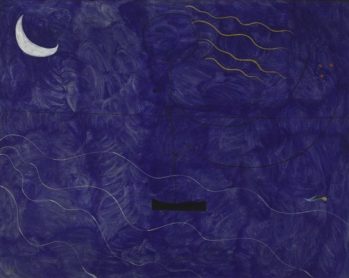
From 1924 through to 1927, the artist did many paintings on blue backgrounds, of which the Centre Pompidou has several examples, such as The Bather (1924), The Siesta (1925) and two Paintings (1927).
Associated initially and metaphorically with heavens and sea, as well as with sleep, the colour blue thus freed itself at this time from any such reference, transcending the notion of abstraction to which Miró never laid claim, attached as he would always remain to the notion of poetic “realism”.
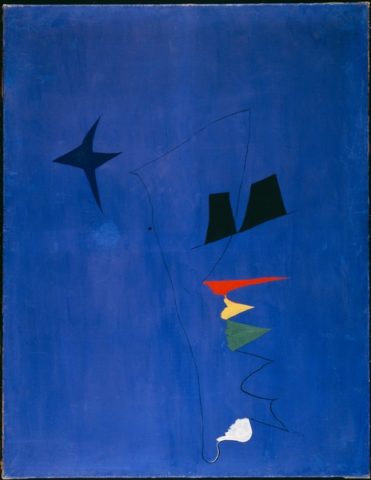
En 1961, soit plus de trente ans plus tard, Miró revient à ce fond monochrome dans un esprit minimaliste qui tranche avec les autres œuvres de cette période qui s’est ouverte après la série des Constellations des années 1940. Dans les trois Bleus la raréfaction des motifs et le recours à seulement deux autres couleurs, le noir et le rouge, décuplent encore la puissance de la couleur élue par Miró.

In 1961, over thirty years later, Miró returned to this monochrome background in a minimalist spirit that marks a contrast with his other works from this period which opened with the series of the Constellations in the 1940s. In the three Blues, the scarcity of the motifs and use of just two other colours, black and red, further multiplies the power of Miró’s chosen colour.
VERY IMPORTANT PIECES, CENTRE POMPIDOU
Joan Miró. Bleu I, Bleu II, Bleu III . PompidouVIP © Successió Miró / Adagp, Paris 2020
Si la page ne se ferme pas, merci de cliquer sur la croix dans l’onglet de votre navigateur

Reproduced Works and resources
- Joan Miró, Sketch Blue I, 1961. Fundació Joan Miró, Barcelone (FJM 2446) © Successió Miró / Adagp, Paris 2020 © photo Fundació Joan Miró, Barcelone
- Joan Miró, Sketch Blue II,, 1961. Fundació Joan Miró, Barcelone (FJM 2444) © Successió Miró / Adagp, Paris 2020 © photo Fundació Joan Miró, Barcelone
- Joan Miró, Sketch Blue III,, 1961. Fundació Joan Miró, Barcelone (FJM 2445) © Successió Miró / Adagp, Paris 2020 © photo Fundació Joan Miró, Barcelone
- Joan Miró, Blue I, 4 March 1961.Oil on canvas. Purchase in memory of Dominique Bozo, with the support of the Fonds du Patrimoine and the help of Sylvie and Eric Boissonnas, Jacques Boissonnas, Hélène and Michel David-Weill, the Society of Friends of the Museum, Pierre Bergé, Yves Saint Laurent and Maison Yves Saint Laurent, and with the participation of a large number of subscribers, 1993. Collection Centre Pompidou, Paris, Musée national d’art moderne – Centre de création industrielle © Successió Miró / Adagp, Paris 2020 © photo Centre Pompidou, MNAM-CCI/Audrey Laurans/Dist. RMN-GP
- Joan Miró, Blue II, 4 March 1961.Oil on canvas. Donation by the Menil Foundation in memory of Jean de Menil, 1984. Collection Centre Pompidou, Paris, Musée national d’art moderne – Centre de création industrielle © Successió Miró / Adagp, Paris 2020 © photo Centre Pompidou, MNAM-CCI/Audrey Laurans/Dist. RMN-GP
- Joan Miró, Blue III, 4 March 1961.Oil on canvas. Purchase, 1988. Collection Centre Pompidou, Paris, Musée national d’art moderne – Centre de création industrielle © Successió Miró / Adagp, Paris 2020 © photo Centre Pompidou, MNAM-CCI/Audrey Laurans/Dist. RMN-GP
- Joan Miró, The Batcher, autumn 1924. Oil on canvas. Donation Louise and Michel Leiris, 1984. Collection Centre Pompidou, Paris. Musée national d’art moderne – Centre de création industrielle © Successió Miró / Adagp, Paris 2020 © photo Centre Pompidou, MNAM-CCI/Bertrand Prévost/Dist. RMN-GP
- Joan Miró, Painting, april 1927 – may 1927. Oil on canvas. Dation-in-payment, 1994. Collection Centre Pompidou, Paris. Musée national d’art moderne – Centre de création industrielle © Successió Miró / Adagp, Paris 2020 © photo Centre Pompidou, MNAM-CCI/Philippe Migeat/Dist. RMN-GP
- Joan Miró, Blue I, II, III, PompidouVIP © Successió Miró / Adagp, Paris 2020 © Centre Pompidou, SPAV

